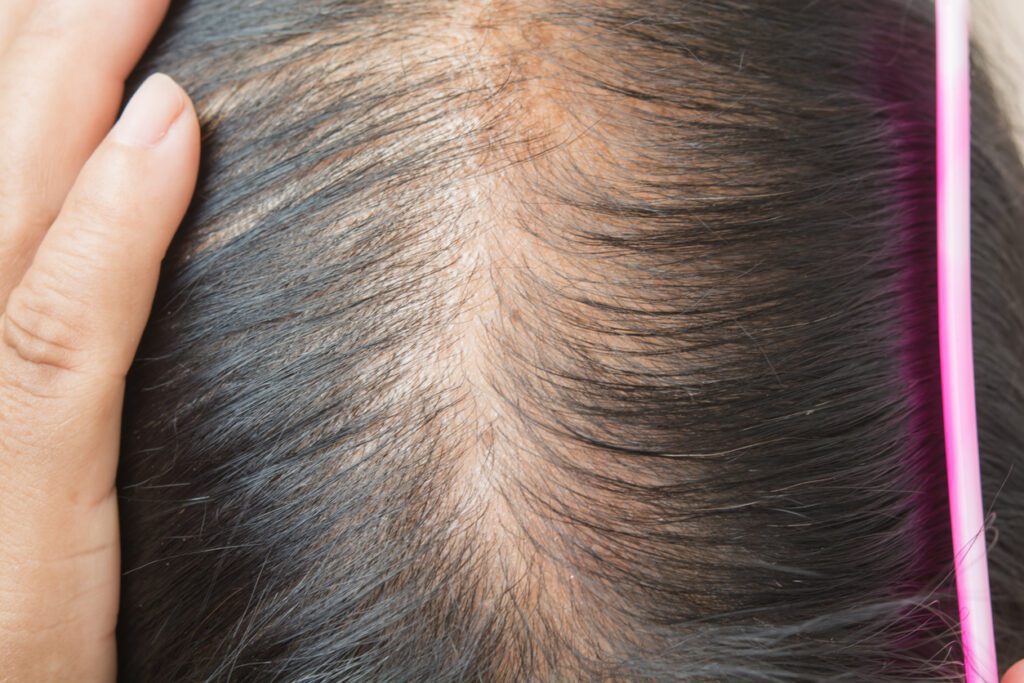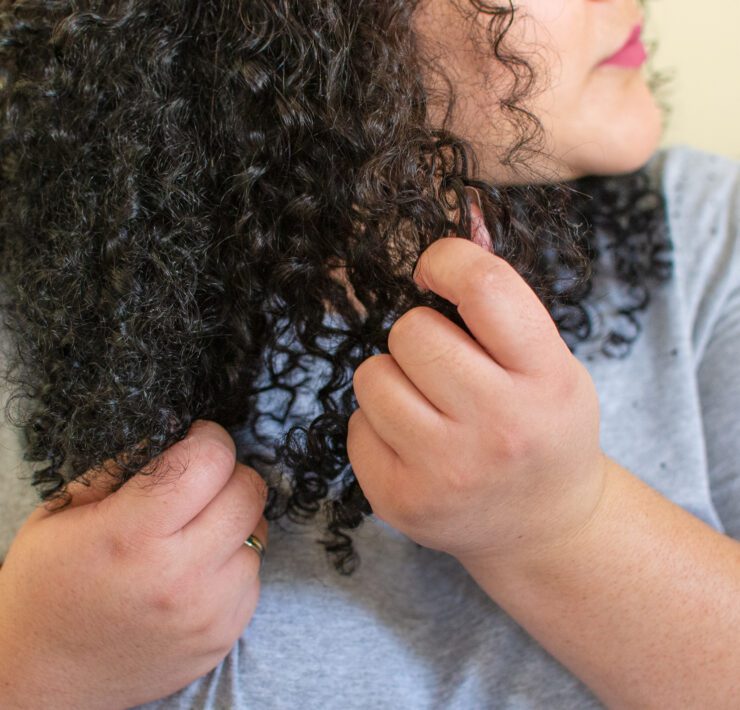
A common complaint in men and women is hair loss. Often, the hair loss is temporary and returns to normal after 2-3 months. However, in some people, this hair loss can be more permanent, as with alopecia. Alopecia is defined as the partial or complete absence of hair from areas of the body where it normally grows. Below is a summary of some of the more common alopecias.
Androgenetic Alopecia (ANA)
This is a dominant genetic disorder that occurs in men and women but is more common in men. It can be inherited from either parent. ANA is a thinning and/or baldness that is called male pattern baldness in men, and female pattern hair loss (FPHL) in women.
More than 95% of all cases of baldness in men are due to ANA. The pattern of hair loss is fairly typical, first recession occurs at the temples or the front/crown areas of the scalp. The final stages leave a band of hair around the back and sides of the scalp. The process can take 10-40 years.

In addition to genetic predisposition, androgens also contribute to ANA.
In women, thinning often begins at menopause or after a hysterectomy. The change in sex hormones gives the male sex hormone more influence and triggers the thinning. Oral contraceptives with an androgen component may also trigger this hair thinning. In any event, women do not go bald as they do not have as high levels of male sex hormones as men. About 30% of post-menopausal women suffer from FPHL.

In 80% of subjects, there is inflammation around the hair follicles. Why this immune reaction occurs is a mystery.
Treatments for ANA include:
- Oral finasteride
- Topical Minoxidil 5%
- L-Tyrosine
- Platelet Rich Plasm
- Laser therapy
- Chemotherapy
- Anti-inflammatories
Alopecia Areata
The diagnosis is typically made by a trichologist examining the scalp with the naked eye. With alopecia areata, the white blood cells attack the melanocytes in the hair bulb. It is an autoimmune condition that can be triggered by a viral or bacterial infection, trauma to the skin, or severe stress. Even blunt trauma to the head can trigger this alopecia. The hairs can break off and look like an exclamation mark under the microscope.
Therapies include:
- Steroid injections
- Cyclosporin
- UVA
- Minoxidil
- Topical sensitizers
- Tyrosine
- N-Acetyl Cysteine
Cicatricial Alopecia or Scarring Alopecia
With this type of alopecia, perifollicular scaling is seen where the hair follicles are destroyed. An example would be a chemical burn as a result of a chemical hair treatment such as applying highlights to the hair using foils.
Central Centrifugal Cicatricial Alopecia (CCPA)
With CCPA, harsh chemicals used for hair straightening can be the culprit. However, there is also an autoimmune component. Some studies have shown a link between CCPA and uterine fibroids. Treatments include topical steroids, calcineurin inhibitors such as tacrolimus, and Minoxidil.
Traction Alopecia
Traction alopecia can be caused by the long-term braiding of the hair. In fact, braids, weaves, dreadlocks, cornrows, and heavy extensions can cause severe and irreversible hair loss in some people.
Please seek out a medical professional or trichologist if you suffer from severe hair loss.
Scientific Resources We Found Useful:
1. Bandaranayake, Ilian, and Paradi Mirmirani, “Hair loss remedies-separating fact from fiction,” CUTIS-NEW YORK- 73.2 (2004): 107-114.
2. Harfmann, Katya L., and Mark A. Bechtel, “Hair loss in women,” Clinical Obstetrics and Gynecology 58.1 (2015): 185-199.
3. Lam, Samuel M, ”Hair Loss and Hair Restoration in Women,” Facial Plastic Surgery Clinics 28.2 (2020): 205-223.
4. Lin, Richard L., et al., “Systemic causes of hair loss,” Annals of medicine 48.6 (2016): 393-402.






